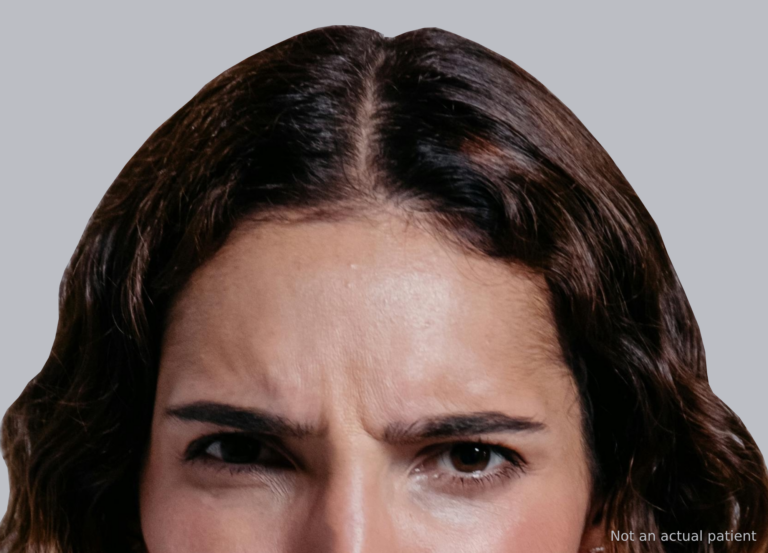From simple treatments at the dermatologist’s office to total body makeovers from a plastic surgeon, aesthetic procedures continue to steadily rise in popularity as more people discover the confidence-boosting possibilities that they offer. But it’s important to remember that aesthetic medicine isn’t magic and is not always the right choice for every person. In fact, many doctors still find the need to turn down some patient requests or refuse to perform certain procedures altogether (but keep in mind that one doctor’s hard pass can be within another’s comfort level). Below, some of the most sought-after plastic surgeons and dermatologists share the patient requests that they always say no to—and why.
Skin-lifting procedures
“I say no all the time. Patients can be very creative. They pull on their skin so things look better and ask, ‘Can’t you do that?’ Patients commonly ask about the arms, legs, and abdomen. When you pull up the abdomen, it is called a reverse abdominoplasty, which is a real surgery. However, the problem is that it can leave a scar under your breasts, all the way across your chest, which looks terrible! I tell the patient it may look like they had a liver transplant, and they laugh and say, ‘Now I know why I never see that!’ The medial thigh lift and brachioplasty aren’t great either, and what patients can do with their hands is much better than how the real surgery comes out. For example, if you pull on a saggy leg from the top, it looks great, but in real life, the top of the leg comes out great, the middle of the leg is a bit better, and the part around the knee is pretty much the same. I will do these surgeries if the patient is a good candidate and has realistic expectations. Mostly, I just refer these to my partner, as I feel the surgery is inherently flawed.” —Dr. Lisa Cassileth, board-certified plastic surgeon in Beverly Hills, California
Botox for bruxism (teeth grinding)
“I refuse to do this treatment—it is way too risky. The jaw muscle has two parts that overline each other. For the treatment to be done correctly, the needle must hit only the top part. This reduces the ability to grind teeth. However, it is impossible to see the muscles, and you have no way of knowing how deep the needle should go. If the needle is inserted too deep and hits the bottom muscle, you will get a bulge on the side of your face. It can range from the size of a walnut to [that of] a golf ball—and is not correctable. It subsides only when the Botox wears off. It can really disfigure the appearance.” —Dr. Dennis Gross, board-certified dermatologist in New York City
“Ski slope” or superthin noses
“I say no to people who want scooped, or ‘ski slope,’ noses because these noses have an unnatural look that takes away the distinction between the nose and the forehead. I have to like the aesthetic of the noses I create. A lot of patients want thinner noses from the front, like the ones they see on filtered social media images. But some also want noses that are pushed back closer to the face and less projected on the side view. The thing that is difficult with the nose is that it is three dimensional, so changing how it looks from the side does not happen in isolation. I have to think about how this will make it look from the front as well. If I push a normal nose back toward the face and ‘de-project’ it, it might look good from the side, but it will look wide from the front. Then, to deal with that, I have to take the nostrils in and narrow those. The sum total of these maneuvers can make the nostrils too small and cause potentially irreversible nasal breathing obstruction. If a nose is overprojected to begin with, then certainly there are things that can be done to push it back and narrow the nostrils. The problem I see more and more is patients with relatively normal noses wanting theirs to be pushed back from the side view and narrowed from the front view, and that is when it can become functionally debilitating and unnatural.” —Dr. Leslie Irvine, board-certified plastic surgeon in Manhattan Beach, California
Certain procedure combinations
“I always say no to labiaplasty and breast augmentation together. The labia is not a sterile area, and operating on the labia and putting breast implants in at the same time increases the risk of implant infection. I will do a labiaplasty at the same time as other procedures that don’t involve the use of an implant, such as a breast lift or breast reduction, liposuction, or a tummy tuck. I also don’t do medial or inner thigh lifts at the same time as a tummy tuck. The two procedures put tension on the incisions in different vectors and can lead to wound healing issues, usually in the inner thigh. Also, with a well done abdominoplasty, you will get a modest thigh lift and improvement of the anterior, or front, of the thigh area. In other words, you can pull harder to improve both areas if tummy and thighs are done separately, without fear of wound healing issues.” —Dr. Camille Cash, board-certified plastic surgeon in Houston
Pigmentation treatments in the summer and any treatment right before a big event
“I won’t treat pigmentation—either mottled pigment or individual brown spots—in May or later, on anyone with medium-tone skin, especially of Asian or Indian descent. It’s often a patient who had a successful test area during the fall or winter months but waits to return in spring or summer to have the full treatment. Similarly, I won’t do it for a patient who has had a lot of sun, has a very active outdoor lifestyle, and is heading on vacation somewhere sunny but says, ‘This is when I have the time to do it—I’ll be really careful of the sun.’ Both scenarios are setups for months of post-inflammatory hyperpigmentation. And when a patient comes in, a week before a big occasion or photo shoot, wanting filler or a Silhouette InstaLift and says, ‘You never bruise me’ or ‘I never swell,’ it’s classic Murphy’s Law. The week before a big event, the person who never bruises or swells will bruise or swell!” —Dr. Heidi Waldorf, board-certified dermatologist in Nanuet, New York
Requests that come from a family member or friend
“’Always’ and ‘never’ are terms that many surgeons don’t use very often; I would say that each case is individual and should be evaluated uniquely. But one particular instance where careful consideration is important for both the surgeon and the patient is when a family member or close friend requests to have surgery performed. In these cases, I am happy to be a supportive family member, to help inform them about the process and recovery, but I encourage them to seek other opinions and have an understanding of the surgery. In the case where there is a particular procedure that I have an expertise in or the family member/friend still decides they want to have surgery by me, then I would consider their case further. What I am referring to is a procedure, for instance, that requires a general anesthetic or a trip to the hospital/surgical center. I would be okay performing a small skin tag excision or office procedures on these patients, though every procedure has risks and benefits.” —Dr. Samuel Lin, board-certified plastic surgeon in Boston
Excessive filler
“I always say no to injectable requests that would be out of proportion for the patient’s facial features. This happens most often with people requesting lip fillers. They bring in an image from social media that is entirely inappropriate for their face and think this would look good on them. I gently redirect them to what would look best for them, as the goal is always to make the patient the best version of themselves.” —Dr. Dendy Engelman, board-certified dermatologist in New York City
Imperceptible “flaws” and fat grafting in certain areas
“I always say no when I do not fully see what is bothering the patient. Sometimes, the imperfection that they see is so small that I am not sure if the operation will make a difference. Otherwise, I never always say no, but there are some operations I very much stress the risks of to patients. Fat grafting to the eyes and lips, for example, can be unpredictable with regard to how much fat will survive, since these two areas have very thin skin. Like the other fat on your body, when you gain weight, it will also gain weight, and that can leave raised areas. But if someone is very hollow, it may actually work well. And fat grafting to the buttock is the one operation in plastic surgery that has a real mortality rate from fat emboli. I always discuss these risks and weigh the potential benefits.” —Dr. Melissa Doft, board-certified plastic surgeon in New York City
Buttock and calf implants
“I do not perform buttock or calf cosmetic implants. It’s a short-term fix with many long-term adverse consequences.” —Dr. Laurie Casas, board-certified plastic surgeon in Glenview, Illinois











